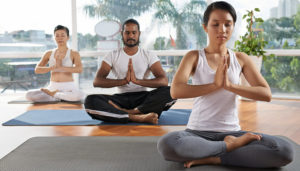
Improve Perception, Mood, and Motor Performance in Children with Mindfulness
By John M. de Castro, Ph.D.
“Mindfulness is widely considered effective as a treatment for children and adolescents with aggression, ADHD, or anxiety.” – Lauren Cassani Davis
Childhood is a miraculous period during which the child is dynamically absorbing information from every aspect of its environment. This occurs almost without any intervention from the adults as the child appears to be programmed to learn. It is here that behaviors, knowledge, skills, and attitudes are developed that shape the individual. But, what is absorbed depends on the environment. If it is replete with speech, the child will learn speech, if it is replete with trauma, the child will learn fear, if it is replete with academic skills the child will learn these, and if it is replete with interactions with others, the child will learn social skills.
Elementary school is an environment that has a huge effect on development. It is also an excellent time to teach children the skills to adaptively negotiate its environment. Mindfulness training in school, at all levels has been shown to have very positive effects. These include academic, cognitive, psychological, and social domains. Importantly, mindfulness training in school appears to improve the student’s self-concept. It also improves attentional ability and reduces stress, which are keys to successful learning in school. Since, what occurs in these early years and in school can have such a profound, long-term effect on the child it is important to further study the impact of mindfulness training on the emotions, behavior, and learning skills of grammar school children.
In today’s Research News article “Enhancing Visual Perception and Motor Accuracy among School Children through a Mindfulness and Compassion Program.” See summary below or view the full text of the study at:
https://www.ncbi.nlm.nih.gov/pmc/articles/PMC5323376/
Tarrasch and colleagues explore the ability of mindfulness and compassion training to improve learning relevant skills and emotions in 4th and 5th grade school children. They recruited three schools to participate and assigned classes to either receive mindfulness and compassion training or to a wait-list control condition. Training occurred in 24 weekly, 45-minute meetings, over 7 months. “The sessions were divided into three modes: receiving care, developing self-care and extending care.” They included meditation practice and Loving Kindness Meditation. The children were measured before and after the 7-month training period for visual-motor integration, including visual perception and motor accuracy, anxiety, and mindfulness.
They found that, in comparison to the wait-list condition, the mindfulness and compassion training produced significant increases in visual perception, motor accuracy, and mindfulness and decreases in anxiety levels. They also found that the higher the levels of mindfulness the better the motor performance and the lower the anxiety levels. Hence, mindfulness and compassion training in elementary school produced tangible benefits for the children.
It should be noted that the wait-list control condition is a relatively weak control condition and these results need to be verified with a randomized controlled clinical trial including an active control condition. In addition, the mindfulness and compassion training was a complex program of many components and it cannot be concluded which ones or which combination of these components were responsible for the effects.
Nevertheless, these are exciting findings. Visual perception and motor accuracy have been shown to be predictive of better mathematical and reading ability, both essential to successful school performance. In addition, high anxiety levels have been shown to disrupt school performance, while high levels of mindfulness have been shown to improve school performance. Hence, all of the benefits produced by the mindfulness and compassion training are known to be associated with better achievement in school. Unfortunately, the study did not have a long-term follow-up to determine if improved school performance was a consequence of the benefits of mindfulness and compassion training.
So, improve perception, mood, and motor performance in children with mindfulness.
“I think that’s the reason that the students are latching on to this because when they’ve had a chance to stop, think, breathe and really kind of feel where they’re at, they know how much stress they’re under finally and now that they are aware of it, they can try to do something about it,” – Layne Millington
CMCS – Center for Mindfulness and Contemplative Studies
This and other Contemplative Studies posts are also available on Google+ https://plus.google.com/106784388191201299496/posts and on Twitter @MindfulResearch
Study Summary
Tarrasch, R., Margalit-Shalom, L., & Berger, R. (2017). Enhancing Visual Perception and Motor Accuracy among School Children through a Mindfulness and Compassion Program. Frontiers in Psychology, 8, 281. http://doi.org/10.3389/fpsyg.2017.00281
Abstract
The present study assessed the effects of the mindfulness/compassion cultivating program: “Call to Care-Israel” on the performance in visual perception (VP) and motor accuracy, as well as on anxiety levels and self-reported mindfulness among 4th and 5th grade students. One hundred and thirty-eight children participated in the program for 24 weekly sessions, while 78 children served as controls. Repeated measures ANOVA’s yielded significant interactions between time of measurement and group for VP, motor accuracy, reported mindfulness, and anxiety. Post hoc tests revealed significant improvements in the four aforementioned measures in the experimental group only. In addition, significant correlations were obtained between the improvement in motor accuracy and the reduction in anxiety and the increase in mindfulness. Since VP and motor accuracy are basic skills associated with quantifiable academic characteristics, such as reading and mathematical abilities, the results may suggest that mindfulness practice has the ability to improve academic achievements.








